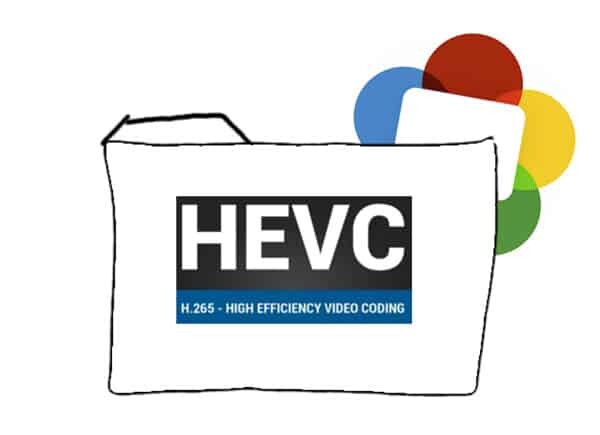To H.265 (=HEVC) or not to H.265? That is the question. And the answer will be determined by the browser vendors.

I gave a keynote at a UC event here in Israel last week. I really enjoyed it. One of the other speakers, made it a point to state that their new top of the line telepresence system now supports… H.265. And 4K. I was under impressed.
H.265 is the latest and greatest in video compression. Unless you count VP9. I’ve written about these codecs before.
If you think about WebRTC in 2016 or even 2017, you need to think beyond the current video codecs – H.264 and VP8. This is important, because you need to decide how much to invest in the media side of your service, and what implications these new codecs will bring to your architecture and development efforts.
I think H.265 is going to have a hard time in the market, and not just because VP9 is already out there, streamed over YouTube to most Chrome and Firefox browsers. It will be the case due to patents.
In March this year, MPEG-LA, the good folks counting money from H.264 patents, have announced a new patent pool for HEVC (=H.265). Two interesting posts to read about this are Jan Ozer‘s and Faultline‘s. Some things to note:
- There currently are 27 patent holders
- Over 500 essential patents are in the pool
- Not everyone with patents around H.265 have joined the pool, so licensing H.265 may end up being a nightmare
- Missing are Google and Microsoft from the patent pool
- Missing are also video conferencing vendors: Polycom, Avaya and Cisco
- Unit cost for encoder or decoder is $0.20/unit
- There’s an annual cap of $25M
What does that mean to WebRTC?
- Internet users are estimated above 3 billion people and Firefox has an estimated market share of around 12%. With over 300 million Firefox users, that places Mozilla way above the cap. Can Mozilla pay $25M a year to get H.265? Probably not
- It also means every successful browser vendor will need to shell these $25M a year to MPEG-LA. I can’t see this happening any time soon
- Google has their own VP9, probably with a slew of relevant patents associated with it. These will be used in the upcoming battle with H.265 and the MPEG-LA I assume
- Microsoft not joining… not sure what that means, but it can’t be good. Microsoft might just end up adopting VP9 and going with Google here, something that might actually look reasonable
- Apple being Apple, if they decide to support WebRTC (and that’s still a big if in 2015 and 2016), they won’t go with the VPx side of the house. They will go with H.265 – they are part of that patent pool
- Cisco isn’t part of this pool. I don’t see them shelling $25M a year on top of the estimated $6M they are already “contributing” for OpenH264 towards MPEG-LA
This is good news for Google and VP9, which is the competing video technology.
When we get to the WebRTC wars around H.265 and VP9, there will be more companies on the VP9 camp. The patents and hassles around H.265 will not make things easy:
- If WebRTC votes for VP9, it doesn’t bode well for H.265
- WebRTC is the largest deployment of video technology already
- Deciding to ignore it as a video codec isn’t a good thing to do
- If WebRTC votes for H.265, unlikely as it may seem, may well kill standards based high quality video support across browsers in WebRTC
- Most browsers will probably prefer ignoring it and go with VP9
- Handsets might go with H.265 due to a political push by 3GPP (a large portion of the patent owners in H.265 are telecom operators and their vendors)
- This disparity between browsers and handsets won’t be good for the market or for WebRTC
The codec wars are not behind us. Interesting times ahead. Better be prepared.
???? Seems like there’s been progress since this article was written. Check it out: WebRTC & HEVC – how can you get these two to work together
So… which of these video codecs should you use in your application? Here’s a free mini video course to help you decide.

Cisco looks like it is promoting a new royalty free alternative with its new Thor codec. They talked about this at the IETF yesterday and posted their code: github.com/cisco/thor
It is probably too late to impact the VP9 vs. H.265 debate, but FOSS codecs like Thor and Mozilla’s Daala are pointing toward a royalty free world in the future.
Thanks for the update Chad – wasn’t aware of it.
Aw, c’mon! That title is a little misguided. The future of WebRTC hardly hangs on the issues surrounding HEVC. There will be many issues as as second group claiming a patent pool has already surfaced, with seriously egregious terms. All of that will only fuel the use of VPx.
I actually do believe it.
VP8 didn’t stand a chance against H.264 when it was first introduced as a replacement for streaming use cases. It got some traction, but not much. VP8 instantly caught on with WebRTC (no other alternative for almost 4 years). Many bought into this, learned the technology and used it so FUD isn’t an option. VP8 opened the way to make VP9 a viable alternative to VP9.
Indeed, patent issues will, at best (worst?) constrain the use of HEVC to high-value, commercial applications. That leaves the WebRTC door open for more agreeable solutions like VPx, Daala, etc. WebRTC itself is not imperiled by HEVC patent issues.
Dan Rayburn yesterday described the most recent patent claims in reference to HEVC. These seem to be very poorly considered.
http://blog.streamingmedia.com/2015/07/new-patent-pool-wants-share-of-revenue-from-content-owners.html
Missed that one – will definitely help bringing confusion to the H.265 camp.